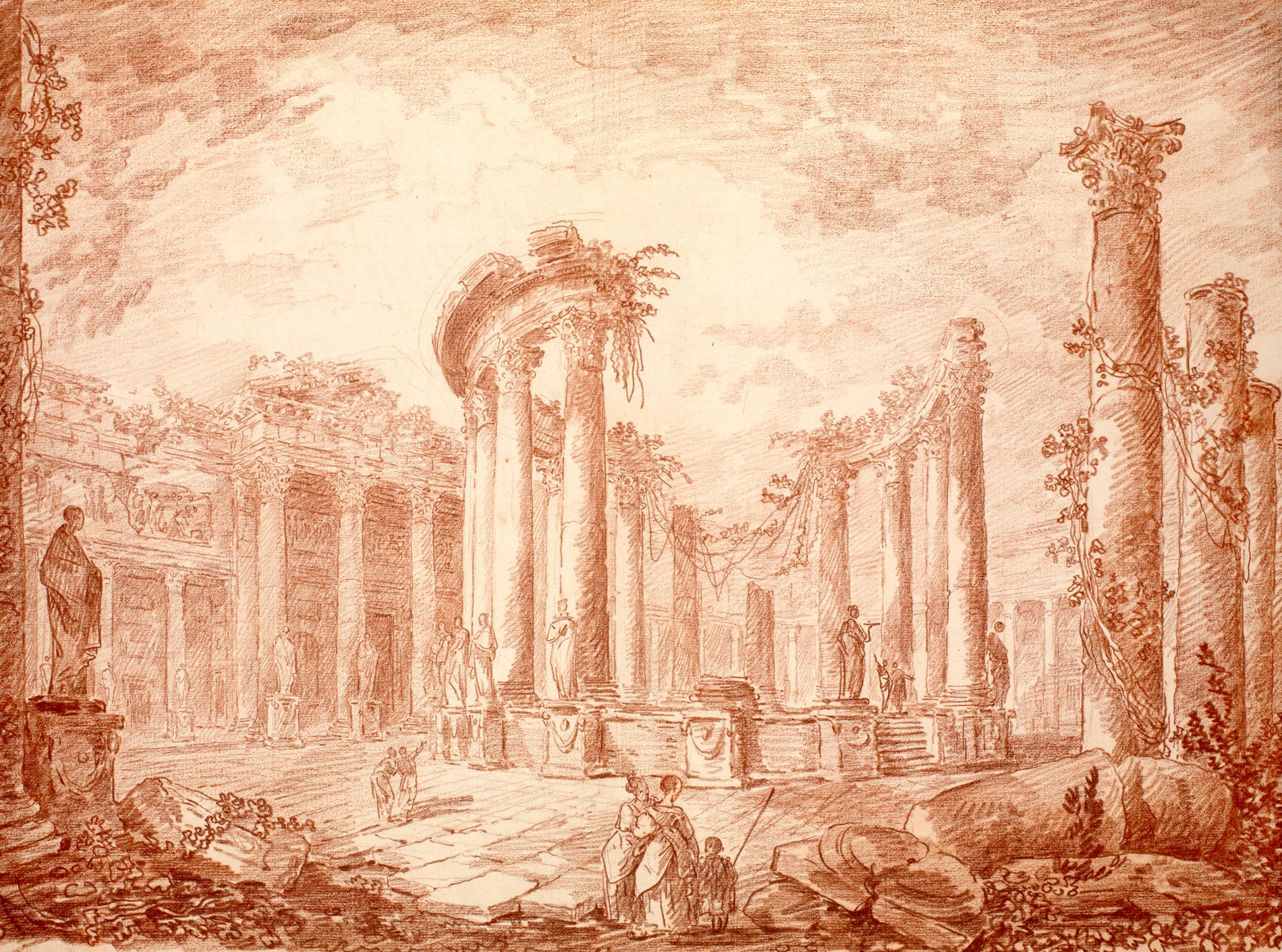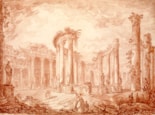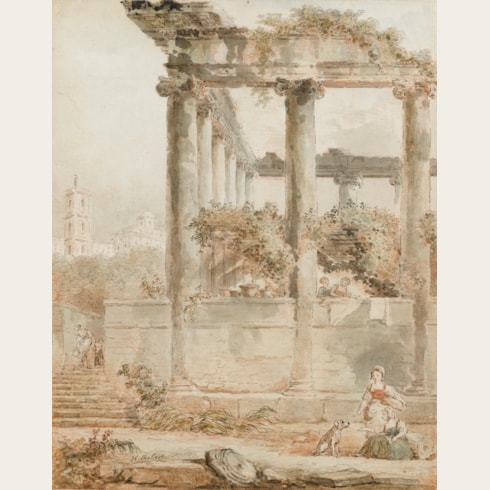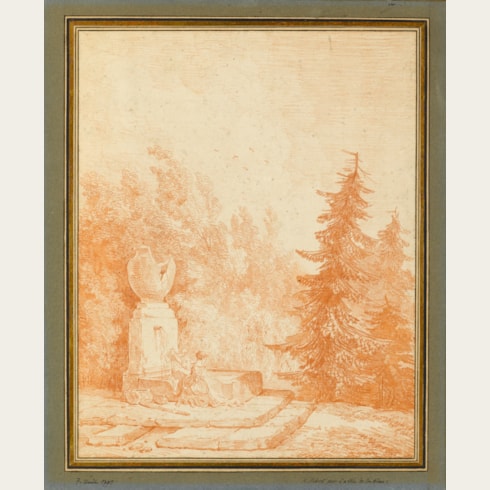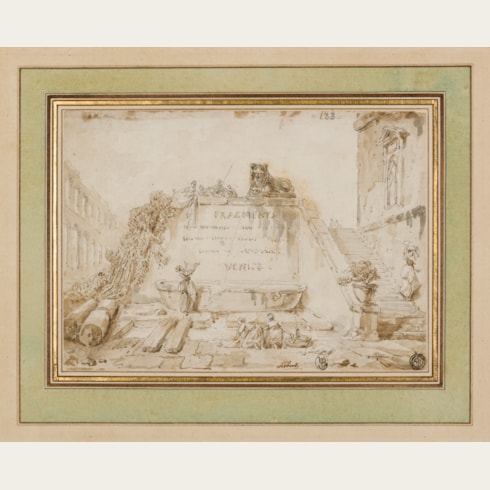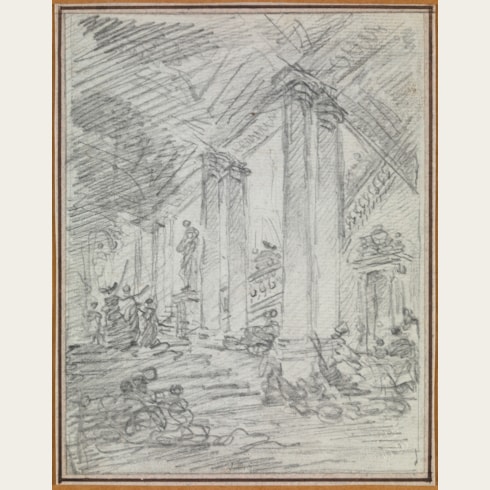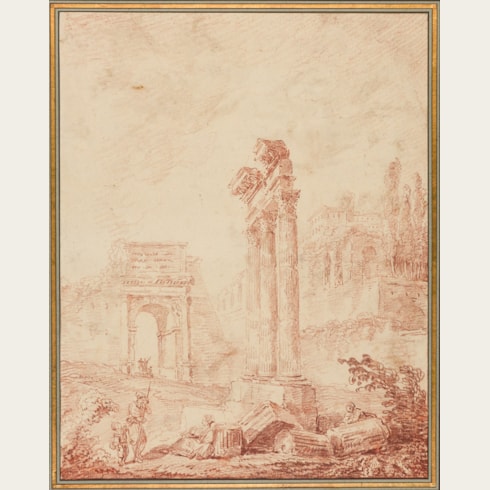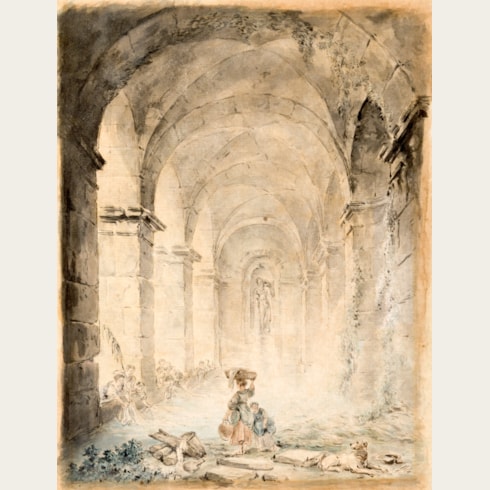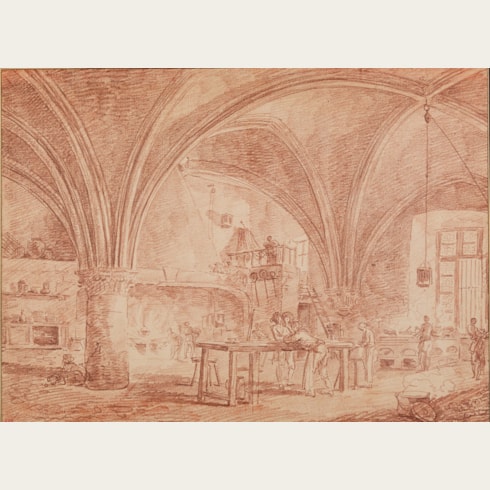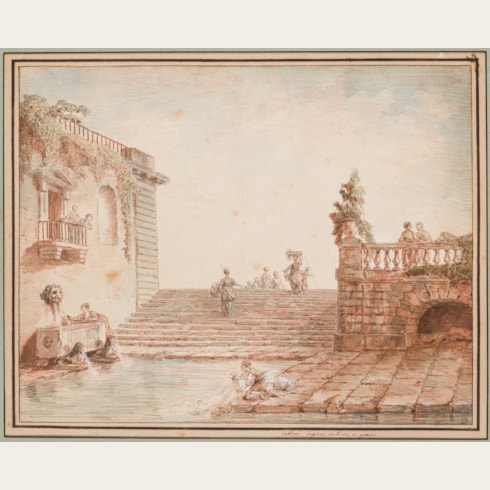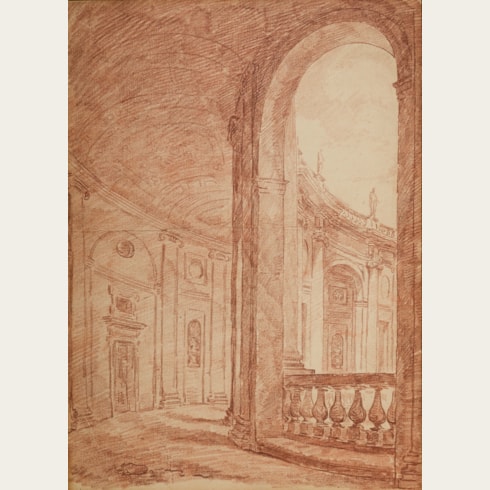Hubert ROBERT
(Paris 1733 - Paris 1808)
The Ruins of the Macellum (‘Temple of Jupiter Serapis’) at Pozzuoli
336 x 450 mm. (13 1/4 x 17 3/4 in.
This large and impressive sheet dates from 1760, when Robert and the Abbé de Saint-Non travelled together to Naples to prepare the illustrations for the Voyage pittoresque, ou description historique des royaumes de Naples, et de Sicile. Like other drawings of the ruins at Pozzuoli by Robert, the artist has here partially reconstructed the Serapeum ‘temple’ to create an imaginary view of the site. Nevertheless, this is something of an idealized reconstruction, as there was no way all the elements in this drawing could have been seen from a single viewpoint. Robert was, in fact, criticized for this by Dominique Vivant-Denon, who was on the same trip to Naples with the artist and Saint-Non.
The print of this view engraved by Louis Germain and Jean-Baptiste Liénard1for the second volume of Saint-Non’s Voyage pittoresquedepicts the scene from a slightly different angle than the present sheet, and would appear to be based on a red chalk drawing by Robert sold at auction in London in 1972. The same drawing also served as the basis for a large finished watercolour now in the Biblioteca Reale in Turin.
Robert made at least three other drawings of the so-called ‘Temple of Jupiter Serapis’ or Serapeum at Pozzuoli, from different angles. These include a large sheet in red chalk in the Museum of Fine Arts in Boston and another in a private collection, of which a variant is in the Albertina in Vienna.
In all of Hubert Robert’s drawings of the macellumat Pozzuoli, as Catherine Boulot has noted of a related watercolour of the same site, the artist ‘has shown a classical building tumbling into ruin, with walls crowned in plants which add a decorative quality. His vision is indeed far more than of a painter than an architect…These drawings, paintings and prints reveal the importance Robert must have attached to this reconstruction of the Serapeum.’
A student of the sculptor Michel-Ange Slodtz, Hubert Robert travelled to Rome in 1754 in the retinue of the new French ambassador to the Vatican, the future Duc de Choiseul. It was probably through the influence of Choiseul that, although he was not officially a pensionnaire at the Académie de France in Rome, the young Robert was able to study there for several years. Succinctly described by the director of the Académie de France, Charles-Joseph Natoire, as a young man ‘who has a penchant for painting architecture’ (‘qui a du goût pour peindre l’architecture’), Robert spent a total of eleven years in Italy, mostly in Rome. He fell under the particular influence of Giovanni Paolo Panini, the leading Italian painter of architectural views and capricci, who taught perspective at the Académie de France. Robert’s earliest paintings and drawings, both in composition and technique, are greatly indebted to the example of Panini. At the Académie de France Robert met and befriended Jean-Honoré Fragonard, and with him made sketching tours of the countryside around Rome.
Robert returned to Paris in 1765, and the following year was admitted into the Académie Royale as a ‘peintre des ruines’, rather unusually being both reçu and agrée in the same year. He made his debut at the Salon in 1767, exhibiting picturesque landscapes and capricci, and soon had developed such a reputation for paintings of real and imagined Roman views, often incorporating ancient ruins, that he was given the sobriquet ‘Robert des Ruines’. A versatile artist, Robert often repeated and developed favourite views or compositions in several different formats, including chalk drawings, finished watercolours, small cabinet pictures and large-scale wall paintings. Appointed dessinateur des jardins du roi in 1778, Robert was also able to incorporate his artistic ideas into his landscape designs for gardens at Versailles and elsewhere. Despite being imprisoned during the Revolution, he remained a significant figure in the artistic scene in Paris until the end of the century.
Provenance
Anonymous sale, Paris, Galerie Charpentier, 8 December 1953, lot 22 (as ‘Le Temple en rotonde…Appartenant à M. L. G....’)
Anonymous sale, Bern, Klipstein & Kornfeld, 7 June 1961, lot 181
Anonymous sale, London, Christie’s, 6 July 1999, lot 186
Kate de Rothschild, London, in 2001
Private collection.
Literature
Exhibition

